Pathology for the Physical Therapist Assistant 1st Edition by Penelope J. Lescher, ISBN-13: 978-0803607866
Original price was: $50.00.$14.99Current price is: $14.99.
Trustpilot
Pathology for the Physical Therapist Assistant 1st Edition by Penelope J. Lescher, ISBN-13: 978-0803607866
[PDF eBook eTextbook] – Available Instantly
- Publisher: F.A. Davis Company; First Edition (March 2, 2011)
- Language: English
- 672 pages
- ISBN-10: 0803607865
- ISBN-13: 978-0803607866
With other texts written at either too high or too low a level, this book meets the needs of PTA students for usable, understandable pathology related to clinical application. Extensively illustrated, this book allows students to more easily comprehend and maintain interest in otherwise complicated pathological processes. The fourteen chapter format effectively fits within a chapter per week course structure, or each chapter may be used as a stand alone module within any course.
Table of Contents:
Front Matter
DEDICATION
PREFACE
ACKNOWLEDGMENTS
REVIEWERS
CHAPTER 1 Inflammation and Healing
LEARNING OBJECTIVES
KEY TERMS
Introduction
Why Does the Physical Therapist Assistant Need to Know About Normal Cell Anatomy and Physiology?
Normal Cell Anatomy and Physiology
FIGURE 1.1 The cell.
FIGURE 1.2 The cell plasma membrane.
Nucleus
Cytoplasm
Plasma Membrane
Cell Injury
Table 1.1 Cytoplasmic Organelles and Their Functions
Cell Injury—Reversible
FIGURE 1.3 Reversible and irreversible cell injury.
FIGURE 1.4 Sodium pump. Sodium ions (Na+) are higher in concentration in the extracellular spaces than in the cell. Thus, NA+ ions continually try to pass into the cell, together with chlorine ions (CL–), through the process of osmosis. Potassium ions (K+) are higher in concentration inside the cell. The sodium pump is driven by ATPase and shunts Na+ out of the cell to maintain homeostasis.
Cell Injury—Irreversible
FIGURE 1.5 Pyknosis, karyorrhexis, and karyolysis.
NECROSIS
Table 1.2 Causes of Cell Injury
FIGURE 1.6 Gangrene of toes.
Table 1.3 Types of Growth Changes of Cells
Cellular Responses to Damage or Stimuli
ATROPHY
FIGURE 1.7 Abnormal cellular growth patterns: atrophy, hypertrophy, hyperplasia, metaplasia.
HYPERTROPHY
HYPERPLASIA
INVOLUTION AND HYPOPLASIA
METAPLASIA
Why Does the Physical Therapist Assistant Need to Know About Inflammation?
Inflammation
Causes of the Inflammatory Response
CELLS INVOLVED IN THE INFLAMMATORY RESPONSE
Polymorphonucleocytes
Eosinophils
Monocytes and Macrophages
Table 1.4 Cells of Inflammation
FIGURE 1.8 Polymorphonuclear neutrophils.
Platelets
Basophils
Lymphocytes and Plasma Cells
Classification of Inflammation
ACUTE INFLAMMATION
SUBACUTE INFLAMMATION
CHRONIC INFLAMMATION
ACUTE ON CHRONIC INFLAMMATION
Table 1.5 Types of Inflammation
Physical Therapy Treatment for Inflammation
Why Does the Physical Therapist Assistant Need to Know About the Healing Process?
Healing
Hints on the Use of the Guide to Physical Therapist Practice (1-1)
Cells Involved in the Healing Process
MYOFIBROBLASTS
ANGIOBLASTS
FIBROBLASTS
FIGURE 1.9 Granulation tissue in the base of a wound.
Types of Healing
Table 1.6 Types of Collagen
FIGURE 1.10 Healing in skin wounds.
It Happened in the Clinic
Complications of Wound Healing Other Than Delayed Healing
FIGURE 1.11 Keloid Scar.
Special Aspects Regarding Pressure Ulcers
Physical Therapy Intervention for Wounds
Table 1.7 Stages of Pressure Ulcers
GERIATRIC CONSIDERATIONS
FIGURE 1.12 Wound with necrotic tissue.
Bone Healing
FIGURE 1.13 Stages of bone healing.
Ligament Healing
Muscle and Tendon Healing
Why Does the Physical Therapist Assistant Need to Know About Pain?
Pain
Pain Control Theories
Physical Therapy Interventions
Table 1.8 Causes of Chronic Pain
Pain Assessment
FIGURE 1.14 Visual analog scale. Instruction to patient: Mark on the line where your pain is with 0 being no pain and 10 being the highest possible pain.
CASE STUDY 1.1
CASE STUDY 1.2
STUDY QUESTIONS
USEFUL WEB SITES
REFERENCES
CHAPTER 2 Immunopathology, Neoplasia, and Chromosome Abnormalities
LEARNING OBJECTIVES
KEY TERMS
INTRODUCTION
Why Does the Physical Therapist Assistant Need to Know About Immunopathology?
Immunopathology
Cells of the Immune Response
LYMPHOCYTES
Hypersensitivity Reactions
Type I Hypersensitivity
Table 2.1 Hypersensitivity Reactions
Bronchial Asthma
FIGURE 2.1 A person experiencing anaphylactic shock.
Allergic Rhinitis
Anaphylactic Shock (Anaphylaxis)
It Happened in the Clinic
Type II Hypersensitivity
Type III Hypersensitivity
Type IV Hypersensitivity
Vaccination
Effects of Exercise on the Immune Response
Why Does the Physical Therapist Assistant Need to Know About Infection?
Infections
Types of Microorganisms
FIGURE 2.2 Bacteria.
Development of Infection
FIGURE 2.3 Viruses come in many shapes and sizes.
Treatment of Infection
Why Does the Physical Therapist Assistant Need to Know About Neoplasia and Oncology Treatments?
HINTS ON USE OF THE GUIDE TO PHYSICAL THERAPIST PRACTICE 2-1
Neoplasia
Table 2.2 Characteristics of Benign and Malignant Tumors
FIGURE 2.4 Kaposi’s sarcoma.
Carcinogens
Risk Factors for Malignant Tumors
Table 2.3 Some Tumors and Their Locations/Classifications
FIGURE 2.5 Common sites of lymphatic nodes affected by breast cancer.
Box 2.1 Warning Signs for Cancer May Include:
GERIATRIC CONSIDERATIONS
Treatment Interventions for Cancer
Table 2.4 Examples of Chemotherapy Medications With Their Classification
PHYSICAL THERAPY INTERVENTION
It Happened in the Clinic
Why Does the Physical Therapist Assistant Need to Know About Chromosome Abnormalities and Genetic and Hereditary Diseases?
Genetic and Hereditary Chromosome Diseases
The Normal Chromosome
FIGURE 2.6 Normal complement of chromosomes
HINTS ON USE OF THE GUIDE TO PHYSICAL THERAPIST PRACTICE 2-2
Overview of Genetic and Hereditary Chromosome Diseases
Table 2.5 Exogenous Teratogens and Their Possible Effects on the Fetus
FIGURE 2.7 Signs and symptoms of congenital rubella syndrome.
FIGURE 2.8 Signs and symptoms of fetal alcohol syndrome.
Chromosome Abnormalities
FIGURE 2.9 Examples of chromosome abnormalities due to breakage and rearrangement. a) Deletions are loss of a part of a chromosome. b) Translocations occur when part of a chromosome is transferred to another chromosome. c) Inversion occurs when there is a break in two places and the chromosome reconnects in the wrong order. d) Robertsonian translocation occurs when the breakage is close to the centromere of the chromosome. e) A ring chromosome is the result of a breakage in the chromosome and the two ends joining together to form a ring.
DETECTION OF CHROMOSOME ABNORMALITIES
Chromosome Abnormality Conditions
Down Syndrome (Trisomy 21)
FIGURE 2.10 Down syndrome and associated karyotype showing trisomy of chromosome 21.
Fragile X Syndrome
Klinefelter Syndrome (47 X-X-Y syndrome)
Patau Syndrome
FIGURE 2.11 Signs and symptoms of Patau syndrome
Turner Syndrome
Why Does the Physical Therapist Assistant (PTA) Need to Know About Developmental Diseases and Birth Injuries?
Developmental Diseases/Birth Injuries
FIGURE 2.12 Signs and symptoms of Turner’s syndrome
Cerebral Palsy
Erb’s Palsy
Prematurity
Rhesus Disease/Hemolytic Disease of the Newborn
Scoliosis
It Happened in the Clinic
Spina Bifida
FIGURE 2.13 Examples of spina bifida include spina bifida occulta, meningocele, and myelomeningocele.
Why Does the Physical Therapist Assistant Need to Know About Genetically Linked Diseases?
Genetically Linked Diseases
Hemophilia
Muscular Dystrophy
Sickle Cell Disease
Spinal Muscular Atrophy
Tetralogy of Fallot
CASE STUDY 2.1
STUDY QUESTIONS
USEFUL WEB SITES
REFERENCES
CHAPTER 3 Cardiovascular Pathologies
LEARNING OBJECTIVES
KEY TERMS
INTRODUCTION
Why Does the Physical Therapist Assistant Need to Know About the Anatomy and Physiology of the Cardiovascular System?
Anatomy and Physiology of the Cardiovascular System
The Heart
FIGURE 3.1 Heart showing internal structures.
FIGURE 3.2 Heart showing major blood vessels.
Neural Control of the Heart
Nerve Conduction System of the Heart
FIGURE 3.3 Electrocardiogram (ECG) showing normal data.
Coronary Circulation
Cardiac Cycle
Heart Sounds
Table 3.1 Normal Heart Sounds
Pulse
Cardiac Output
Table 3.2 Abnormal Heart Sounds
Blood Pressure
Blood Vessels
ARTERIES
FIGURE 3.4 Systemic arteries, anterior view.
VEINS
FIGURE 3.5 Structure and connections of the vessels of the arterial and venous systems.
FIGURE 3.6 Anterior view of the venous system.
CAPILLARIES
Lymphatic System
FIGURE 3.7 Anterior view of lymph vessels and the major groups of lymph nodes.
FIGURE 3.8 Relationship of lymphatic vessels to the cardiovascular system.
Why Does the Physical Therapist Assistant Need to Know About Pathology of the Cardiovascular System?
Hints on the Guide to Physical Therapy Practice
Pathology of the Cardiovascular System
Table 3.3 Normal Adult Heart Values
General Signs and Symptoms of Cardiac Disease
Table 3.4 The Borg Rate of Perceived Exertion Scale
ATRIAL FIBRILLATION
CYANOSIS
DYSPNEA
EDEMA
FATIGUE
HEART BLOCK
INTERMITTENT CLAUDICATION
PAIN
Box 3.1 Routine for Buerger-Allen Exercises
PALPITATIONS
PREMATURE VENTRICULAR CONTRACTIONS
REDUCED EJECTION FRACTION
SYNCOPE
VENTRICULAR FIBRILLATION
Diagnostic Tests Performed for Cardiac Patients
CARDIAC CATHETERIZATION AND ANGIOGRAPHY
ECHOCARDIOGRAPHY
ELECTROCARDIOGRAM
Table 3.5 Characteristics of Electrocardiogram Graph With Associated Activity
HOLTER MONITORING
LABORATORY STUDIES (BLOOD AND URINE)
POSITRON EMISSION TOMOGRAPHY
STRESS TEST
Why Does the Physical Therapist Assistant Need to Know About Disorders and Pathological Conditions of the Heart?
Disorders and Pathological Conditions of the Heart
Angina Pectoris
Aortic Atherosclerosis
Atherosclerosis and Arteriosclerosis
FIGURE 3.9 Atherosclerosis of a vessel
Table 3.6 Risk Factors, Location, and Associated Problems of Atherosclerosis
Cardiac Arrest and Myocardial Infarction
Cardiac Shock, Cardiac Failure, Heart Failure
Cardiomyopathy
Congestive Heart Failure
Table 3.7 Causes and Effects of Congestive Heart Failure
GERIATRIC CONSIDERATIONS
Endocarditis
FIGURE 3.10 Bacterial endocarditis showing splinter hemorrhages in the nail.
Heart Infarct Rupture
Hypertension and Hypertensive Heart Disease
It Happened in the Clinic
Ischemic Heart Disease
Myocarditis
Pericarditis
Rheumatic Heart Disease and Rheumatic Fever
Valve Diseases
Why Does the Physical Therapist Assistant Need to Know About Cardiac Surgeries and Rehabilitation?
Cardiac Surgeries and Cardiac Rehabilitation
Coronary Artery Bypass Graft
Heart Transplant
Open Heart Surgery
Pacemaker Insertion
Percutaneous Transluminal Coronary Artery Angioplasty
Why Does the Physical Therapist Assistant Need to Know About Arterial Diseases?
Arterial Diseases
Arteritis
Cerebrovascular Disease
Patent Ductus Arteriosus
Peripheral Vascular Disease
MAJOR ASPECTS OF PVD FOR THE PTA
Polyarteritis Nodosa
Raynaud’s Disease or Syndrome
FIGURE 3.11 Hands of a patient affected by Raynaud’s disease.
Thromboangiitis Obliterans (Buerger’s Disease)
Why Does the Physical Therapist Assistant Need to Know About Venous Diseases?
Venous Diseases
Thrombophlebitis and Deep Venous Thrombosis
Varicose Veins
Why Does the Physical Therapist Assistant Need to Know About Blood Disorders?
Blood Disorders
Anemias and Other Disorders of Red Blood Cells
Leukemias
Lymphatic Disorders
Hodgkin’s Disease and Hodgkin’s Lymphoma
Lymphangitis and Lymphadenitis
Lymphedema
FIGURE 3.12 Patient with lymphedema of the arm.
Why Does the Physical Therapist Assistant Need to Know About Cardiovascular System Failure?
Cardiovascular System Failure
Hypovolemic Shock and Organ Failure
Physical Therapy Treatment and the Role of the PTA in Cardiac and Circulatory Conditions
Other Considerations
Home Health Physical Therapy
Outpatient Cardiac Rehabilitation
CASE STUDY 3.1
CASE STUDY 3.2
STUDY QUESTIONS
USEFUL WEBSITES
REFERENCES
CHAPTER 4 Respiratory Diseases
LEARNING OBJECTIVES
KEY TERMS
Introduction
Why Does the Physical Therapist Assistant Need to know About the Anatomy and Physiology of the Respiratory System?
Anatomy and Physiology of the Respiratory System
The Thoracic Cage and Its Contents
FIGURE 4.1 Sagittal section of the head and neck.
FIGURE 4.2 Thoracic cage with contents.
MOVEMENTS OF THE THORAX
THE LUNGS
Table 4.1 Surface Marking for the Respiratory System
FIGURE 4.3 Lobes of the lungs.
Table 4.2 Bronchopulmonary Segments of the Lungs
FIGURE 4.4 Bronchial tree showing bronchial branches to all segments of the lungs.
FIGURE 4.5 Bronchopulmonary segments of lungs: 1) apical (UL), 2) posterior (UL), 3) anterior (UL), 4) right lateral (ML), 4) left superior lingular (UL), 5) right medial (ML), 5) left inferior lingular (UL), 6) right and left superior or apical (LL), 7) right only medial basal (LL) (cardiac), 8) anterior basal (LL), 9) lateral basal (LL), and 10) posterior basal (LL).
Physiology of Ventilation and Respiration
BREATHING PATTERNS
VENTILATION CONTROL
LUNG CAPACITIES AND VOLUMES
Table 4.3 Lung Capacities in the Healthy Adult Male
GASEOUS EXCHANGE AND OXYGEN TRANSPORT
Muscles of Ventilation
DIAPHRAGM
EXTERNAL AND INTERNAL INTERCOSTAL MUSCLES
Why Does the Physical Therapist Assistant Need to Know About Tests for Respiratory Function?
Tests for Respiratory Function
Subjective Findings
Objective Findings
EXCURSION
INTERCOSTAL INDRAWING
BREATH SOUNDS
FIGURE 4.6 Pattern of stethoscope positions for listening to breath sounds.
Lung Function Tests
SPIROMETRY
FIGURE 4.7 Incentive spirometer in use.
FIGURE 4.8 Electronic spirometer.
PEAK EXPIRATORY FLOW
Table 4.4 Four Stages of Classification of Chronic Obstructive Pulmonary Disease (COPD) Related to Spirometry Values
Arterial Blood Gases
FIGURE 4.9 Spirometry flow/volume curves showing normal (A) and abnormal (B and C) forced expiratory volume in 1 second (FEV1) and vital capacity (VC) value.
ACID/BASE BALANCE OF BLOOD
Table 4.5 Normal Levels in Arterial Blood Gas Samples
CHEST RADIOGRAPHS
FIGURE 4.10 Pulse oximeter.
COMPUTED TOMOGRAPHY
MAGNETIC RESONANCE IMAGING
PULMONARY ARTERIOGRAPHY OR ANGIOGRAPHY
BRONCHOSCOPY
EXERCISE CAPACITY AND TOLERANCE
HEMATOLOGICAL TESTS
MICROBIOLOGY
Table 4.6 Hematology Interpretation and Normal Values
Table 4.7 Hematology Electrolyte and Lipoprotein Interpretation and Normal Values
Table 4.8 Explanation of the Abbreviations Used for the International System of Units (SI Units).
Why Does the Physical Therapist Assistant Need to Know About Diseases of the Respiratory System?
Diseases of the Respiratory System
General Signs and Symptoms of Pulmonary Diseases
HINTS ON USE OF THE GUIDE TO PHYSICAL THERAPIST PRACTICE
COUGH
DYSPNEA
Table 4.9 Types of Sputum, Appearance, and Causes
CYANOSIS
CHEST PAIN
CHEST SHAPE AND REDUCED THORACIC MOBILITY
PULMONARY EDEMA
FIGURE 4.11 Clubbing of fingers.
ATELECTASIS
BRONCHIOLITIS
PNEUMOTHORAX AND PLEURAL EFFUSION
Why Does the Physical Therapist Assistant Need to Know About Pathological Conditions of the Respiratory Tract?
Pathological Conditions of the Respiratory Tract
Lung Abscess
FIGURE 4.12 Bronchiectasis in the lung.
Chronic Bronchitis and Emphysema
Chronic Bronchitis
FIGURE 4.13 Characteristic “pink puffer” and “blue bloater” appearance in chronic obstructive pulmonary disease.
Table 4.10 Clinical Picture of COPD Conditions
It Happened in the Clinic
Emphysema
FIGURE 4.14 Emphysema in the lung.
It Happened in the Clinic
Asthma
Pneumonia
Table 4.11 Clinical Picture of Some Pulmonary Conditions
GERIATRIC CONSIDERATIONS
Cystic Fibrosis
Tuberculosis
Lung Cancer, Benign Lung Tumors, and Malignant Lung Tumors
Pulmonary Infarction
Pneumoconioses
Sarcoidosis
Adult Respiratory Distress Syndrome
Bronchopulmonary Dysplasia in Pediatric Respiratory Distress Syndrome
Pulmonary Surgery
FIGURE 4.15 Thoracotomy incision with related muscles.
Pneumonectomy
FIGURE 4.16 Hand and arm position to support incision after pneumonectomy.
Lobectomy
Hemothorax and Pneumothorax
Post—pulmonary Surgery Complications
Tracheotomy
FIGURE 4.17 Photograph of Pleurovac unit.
Lung Transplant
Classes of Medications Used to Treat Respiratory Diseases
The Role of the PTA in Interventions for Patients With Respiratory Diseases
Specific Physical Therapy Treatment Interventions for Patients With Respiratory Pathologies
POSTURAL DRAINAGE AND AIRWAY CLEARANCE TECHNIQUES
FIGURE 4.18 Position for (A) chest clapping/percussion and (B) vibration of a patient for assisted airway clearance techniques.
FIGURE 4.19 Various bronchopulmonary segment postural drainage positions.
COUGHING AND HUFFING TECHNIQUES
Table 4.12 Contraindications and Precautions of Postural Drainage
BREATHING EXERCISES
FIGURE 4.20 Initial relaxed position for diaphragmatic breathing exercises.
VENTILATORS, LIFE SUPPORT SYSTEMS, AND INTERMITTENT POSITIVE PRESSURE BREATHING
PEDIATRIC CONCERNS AND SPECIAL CONSIDERATIONS
4.1 CASE STUDY
4.2 CASE STUDY
STUDY QUESTIONS
USEFUL WEB SITES
REFERENCES
CHAPTER 5 Degenerative Joint Diseases and Bone Pathologies
LEARNING OBJECTIVES
KEY TERMS
Introduction
Why Does the Physical Therapist Assistant Need to Know About Normal Joint Structure?
Normal Joint Structure
FIGURE 5.1 A synovial joint.
Why Does the Physical Therapist Assistant Need to Know About the Normal Anatomy and Physiology of Bone?
Normal Anatomy and Physiology of Bone
FIGURE 5.2 Structure of a long bone.
Why Does the Physical Therapist Assistant Need to Know About Degenerative Diseases of the Joints?
Degenerative Diseases of Joints
Hints on the Use of the Guide to Physical Therapist Practice (OA, Gout, and Infective Arthritis)
Osteoarthritis (Osteoarthrosis)
FIGURE 5.3 Effects of osteoarthrosis (OA) in a synovial joint.
Table 5.1 Characteristics of Osteoarthritis (Osteoarthrosis)
Clinical Picture of OA
OA of the Hip
Closed kinetic chain
OA of the Knee
It Happened in the Clinic
OA of the Hands
OA of the feet
FIGURE 5.4 Osteoarthrosis (OA) of the hands.
GERIATRIC CONSIDERATIONS
Spondylosis
Clinical picture and characteristics of spondylosis
Spondylolysis
FIGURE 5.5 A pair of lumbar vertebrae showing the pars interarticularis and related structures.
Spondylolisthesis
FIGURE 5.6 Spondylolisthesis of the lumbosacral spine.
Infective (Septic) Arthritis
Hemophilic Arthritis
Lyme disease
FIGURE 5.7 The bull’s-eye rash of Lyme disease.
Gout
FIGURE 5.8 Gouty tophi in the hand.
Surgical Intervention for Arthritis
ARTHRODESIS
HEMIARTHROPLASTY
MENISCECTOMY
FIGURE 5.9 Hemiarthroplasty of the hip.
OSTEOTOMY
RESECTION ARTHROPLASTY
TOTAL JOINT ARTHROPLASTY
TOTAL HIP ARTHROPLASTY
FIGURE 5.10 Total hip arthroplasty (THA).
TOTAL KNEE ARTHROPLASTY
FIGURE 5.11 Total joint arthroplasty of the knee (TKA).
TOTAL SHOULDER ARTHROPLASTY
FIGURE 5.12 Total joint arthroplasty of the shoulder.
OTHER JOINT ARTHROPLASTY
FIGURE 5.13 Total joint arthroplasty of the elbow.
Why Does the Physical Therapist Assistant Need to Know About Diseases of the Bone?
Diseases of Bone
Hints on the Use of the Guide to Physical Therapist Practice (5-2): Osteoporosis and Paget’s disease
Osteoporosis
FIGURE 5.14 Osteoporotic bone.
GERIATRIC CONSIDERATIONS
Rickets
Osteomalacia
Legg-Calvé-Perthes Disease
Slipped Capital Femoral Epiphysis
Paget’s Disease
FIGURE 5.15 Paget’s disease of bone.
Osteomyelitis
Bone Diseases Associated With Hyperparathyroidism and Hypoparathyroidism
Tuberculosis in the Bone
Syphilis
Gonococcal Arthritis (Disseminated Gonococcal Infection)
HIV/AIDS-Related Arthritic Symptoms
Bone Tumors
Osteosarcoma
Osteoma, Osteoid Osteoma, and Osteoblastoma
Osteochondroma
Giant cell tumor of bone
Ewing’s sarcoma
Fibrous Dysplasia
Multiple Myeloma
Bone Metastases
Cartilage Tumors
Chondroma
Chondrosarcoma
Joint Abnormalities
Genu valgum (Knock-Knee)
Genu Varum (Bow Legs)
FIGURE 5.16 Genu valgum and Genu varum deformities of the knees.
Genetic Bone Abnormalities
Talipes Equinovarus (Clubfoot)
Developmental Dysplasia of the Hip
FIGURE 5.17 Talipes equinovarus (clubfoot).
Torticollis
FIGURE 5.18 Hip spica devices for developmental dysplasia of the hip. (A) Pavlik harness. (B) Hip spica cast.
Achondroplasia
Osteogenesis Imperfecta
Osteopetrosis
Marfan’s Syndrome
5.1 CASE STUDY
STUDY QUESTIONS
USEFUL WEB SITES
REFERENCES
CHAPTER 6 Rheumatoid Arthritis and Related Conditions
LEARNING OBJECTIVES
KEY TERMS
Introduction
Why Does the Physical Therapist Assistant Need to Know About Rheumatoid Arthritis?
Rheumatoid Arthritis
HINTS ON USE OF THE GUIDE TO PHYSICAL THERAPIST PRACTICE
Articular (Joint) Pathological Changes
Table 6.1 Comparison of Osteoarthritis and Rheumatoid arthritis
FIGURE 6.1 A rheumatoid arthritis joint showing progressively worsening joint changes.
FIGURE 6.2 One of the signs of rheumatoid arthritis is “spindle finger,” also known as a fusiform-shaped finger, in the proximal interphalangeal joints.
FIGURE 6.3 Boutonnière’s deformity in a hand with rheumatoid arthritis.
FIGURE 6.4 Swan-neck deformity in a hand with rheumatoid arthritis.
FIGURE 6.5 Ulnar drift in a hand with rheumatoid arthritis (Z deformity).
FIGURE 6.6 A foot in a patient with rheumatoid arthritis.
FIGURE 6.7 Toe deformities in RA: claw toe, mallet toe, hammer toe.
FIGURE 6.8 Rheumatoid knees.
Nonarticular (Nonjoint) Pathological Changes
FIGURE 6.9 Rheumatoid nodule in the forearm.
“It Happened in the Clinic”
FIGURE 6.10 X-ray showing severe RA of hand.
FIGURE 6.11 Knee immobilizing splint.
FIGURE 6.12 “Ring” splint for swan-neck and Boutonnière’s deformity.
FIGURE 6.13 Modified “cock-up” splint for rheumatoid arthritis.
Table 6.2 Some Medications Used to Treat Rheumatoid Arthritis With Effects and Side Effects
GERIATRIC CONSIDERATIONS
FIGURE 6.14 Special molded handle cane for use with persons with reduced grip.
PRECAUTIONS, CONTRAINDICATIONS, AND SPECIAL CONSIDERATIONS FOR PT INTERVENTION FOR PATIENTS WITH RA
Why Does the Physical Therapist Assistant Need to Know About Juvenile Rheumatoid Arthritis and Still’s Disease?
Juvenile Rheumatoid Arthritis and Still’s Disease
Table 6.3 Characteristics of Still’s Disease
Why Does the Physical Therapist Assistant Need to Know About The Rheumatoid-Related Inflammatory Joint Pathologies?
Rheumatoid-Related Inflammatory Joint Pathologies
HINTS ON USE OF THE GUIDE TO PHYSICAL THERAPIST PRACTICE
Ankylosing Spondylitis
FIGURE 6.15 Bamboo spine appearance in ankylosing spondylitis.
FIGURE 6.16 Patient with ankylosing spondylitis showing typical posture.
“It Happened in the Clinic”
FIGURE 6.17 Patient measured with a spondylometer.
“It Happened in the Clinic”
Psoriatic Arthritis
Table 6.4 Types of Psoriatic Arthritis
FIGURE 6.18 Foot in a patient with psoriatic arthritis.
FIGURE 6.19 “Pencil-in-cup” deformity of the distal phalanx.
FIGURE 6.20 Pitting of the finger nail in a patient with psoriatic arthritis.
Reactive Arthritis (Reiter’s Syndrome)
Table 6.5 Comparison of Several Seronegative Polyarticular Arthropathies
GERIATRIC CONSIDERATIONS
HINTS ON USE OF THE GUIDE TO PHYSICAL THERAPIST PRACTICE
Why Does the Physical Therapist Assistant Need to Know About Connective Tissue Diseases?
Connective Tissue Diseases
Scleroderma
FIGURE 6.21 Hands of a patient with scleroderma.
FIGURE 6.22 The typical facial appearance of a woman with scleroderma.
Table 6.6 Signs and Symptoms of Scleroderma and Systemic Lupus Erythematosus
“It Happened in the Clinic”
Systemic Lupus Erythematosus
FIGURE 6.23 Butterfly rash of systemic lupus erythematosus.
Fibromyalgia
FIGURE 6.24 Location of tender points in fibromyalgia.
Giant Cell Arteritis
Polymyalgia Rheumatica
Myofascial Pain Syndrome
FIGURE 6.25 Infraspinatus trigger point location showing area of referred pain down the arm.
Polyarteritis Nodosa
HINTS ON USE OF THE GUIDE TO PHYSICAL THERAPIST PRACTICE
Why Does the Physical Therapist Assistant Need to Know About Other Rheumatoid and Connective Tissue—Associated Diseases?
Other Rheumatoid- and Connective Tissue—Associated Diseases
Complex Regional Pain Syndrome
Rheumatic Fever
Sarcoidosis
Sjögren’s Syndrome
Why Does the Physical Therapist Assistant Need to Know About Muscle Diseases?
Muscle Diseases
HINTS ON USE OF THE GUIDE TO PHYSICAL THERAPIST PRACTICE
Muscular Dystrophy
Myasthenia Gravis
Inflammatory Myopathies
6.1 CASE STUDY
6.2 CASE STUDY
6.3 CASE STUDY
STUDY QUESTIONS
USEFUL WEB SITES
REFERENCES
CHAPTER 7 Neurological Disorders
LEARNING OBJECTIVES
KEY TERMS
Introduction
Why Does the Physical Therapist Assistant Need to Know About the Anatomy and Physiology of the Neurological System?
The Anatomy and Physiology of the Neurological System
FIGURE 7.1 The brain. (A) Showing lateral view (external surface). B. Showing medial view of one side of the brain.
Development of the Nervous System in the Fetus
PRIMITIVE REFLEXES
Table 7.1 Primitive Reflexes and Reactions
Table 7.2 Normal Postural Reactions and Other Associated Responses
MOTOR DEVELOPMENT
Table 7.3 Some Major Milestones of Motor Development
The Neuron
FIGURE 7.2 A neuron.
NERVE TRANSMISSION
FIGURE 7.3 A synapse.
Table 7.4 Some of the Neurotransmitters Produced at Synapses
Table 7.5 More Commonly Known Substances That Either Enhance or Depress Synaptic Transmission
MOTOR NEURONS
FIGURE 7.4 Location of motor areas in the cortex of the brain.
Central Nervous System
BLOOD SUPPLY TO THE BRAIN
FIGURE 7.5 Circle of Willis.
CEREBROSPINAL FLUID
BRAINSTEM
Table 7.6 Cranial Nerves
BASAL GANGLIA
DIENCEPHALON
CEREBELLUM
CEREBRUM
Table 7.7 Some Deficits Resulting From Damage to Areas of the Brain
SPINAL CORD
FIGURE 7.6 Cross section of the spinal cord. (A) Main areas of gray and white matter. (B) Ascending (sensory) tracts and descending (motor) tracts. (The descending and ascending tracts travel on both sides of the spinal cord. The figure shows them separately for clarity.)
Table 7.8 Some of the Main Spinal Tracts of the White Matter of the Spinal Cord With Their Functions
FIGURE 7.7 Spinal reflex arc showing the stretch reflex.
VESTIBULAR SYSTEM
LIMBIC SYSTEM
AUTONOMIC NERVOUS SYSTEM
Peripheral Nervous System
Table 7.9 Cutaneous Sensory Receptors
FIGURE 7.8 Cervical plexus.
PERIPHERAL NERVE LESIONS
FIGURE 7.9 Brachial plexus.
FIGURE 7.10 Lumbar plexus.
FIGURE 7.11 Sacral plexus.
Table 7.10 Cervical and Thoracic Peripheral Nerves, Nerve Root Derivation, and Muscle and Other Innervations
FIGURE 7.12 (A) Anterior view and (B) posterior view of dermatomes.
Table 7.11 Lumbar and Sacral Peripheral Nerves, Nerve Root Derivation, and Muscle and Other Innervations
Testing for the Neurological System
CT SCAN
DERMATOMES
DEEP TENDON REFLEXES
ELECTRODIAGNOSTIC TESTING: ELECTROMYOGRAPHY AND NERVE CONDUCTION STUDIES
GLASGOW COMA SCALE
MAGNETIC RESONANCE IMAGING (MRI)
MUSCLE STRENGTH TESTING
MYOTOMES
NEURAL TENSION TESTING/NERVE STRETCHING
Table 7.12 Manual Muscle Testing Grades
Table 7.13 The Spinal Nerve Root Supply to Groups of Muscles
PALPATION
POSTTRAUMATIC AMNESIA SCALES
RANCHO LOS AMIGOS LEVELS OF COGNITIVE FUNCTIONING
FIGURE 7.13 A selection of goniometers.
RANGE OF MOTION
FIGURE 7.14 An inclinometer.
SOME SPECIFIC PERIPHERAL NERVE TESTS
TWO-POINT DISCRIMINATION
VERTEBRAL ARTERY TEST FOR CERVICAL SPINE
Physical Therapy Treatment for People With Neurological Conditions
Adverse Mechanical/Neural Tension
Alexander Technique
Brunnstrom Approach
Constraint-Induced Movement Therapy
Craniosacral Therapy
Feldenkrais Method
Myofascial Release
Neurodevelopmental Therapy/Bobath Techniques
Proprioceptive Neuromuscular Facilitation
Sensory Integration
Tai Chi Chuan in Rehabilitation
Why Does the Physical Therapist Assistant Need to Know About the Anatomy and Physiology of the Neurological System?
Neurological Disorders
HINTS ON USE OF THE GUIDE TO PHYSICAL THERAPIST PRACTICE
Neurological Conditions Resulting From Deficits in the Development of the Nervous System or Birth Injury
Anencephaly
Arnold-Chiari Malformation/ Chiari Malformation
Autism Spectrum Disorder
Cerebral Palsy
Fetal Alcohol Spectrum Disorders
“It Happened in the Clinic”
Holoprosencephaly
Common Neurological Disorders
Alzheimer’s Disease (Also See Dementia—Non-Alzheimer’s)
Table 7.14 The Stages of Alzheimer’s Disease
“It Happened in the Clinic”
Amyotrophic Lateral Sclerosis
Cerebrovascular Accident and Transient Ischemic Attack
PRECAUTIONS AND CONSIDERATIONS FOR PHYSICAL THERAPY INTERVENTION
GERIATRIC CONSIDERATIONS
Creutzfeldt-Jacob Disease
Dementia—Non-Alzheimer’s (Lewy Body, Senile Dementia, Vascular Dementia)
Epilepsy, Seizure Disorder, and Epileptic Syndromes
Guillain Barré Syndrome and Acute Inflammatory Demyelinating Neuropathy
Huntington’s Disease
Multiple Sclerosis
“It Happened in the Clinic”
Near-Drowning/Drowning With Partial or Full Recovery
Neuropathy, Peripheral Neuropathy and Polyneuropathy
Parkinson’s Disease
Table 7.15 The Staging of Parkinson’s Disease Using the Hoehn and Yahr Scale
“It Happened in the Clinic”
Post-Polio Syndrome
Spinal Cord Injury
Traumatic Brain Injury and Head Injury
FIGURE 7.15 Coup and countercoup head injury
CASE STUDY 7.1
CASE STUDY 7.2
STUDY QUESTIONS
USEFUL WEB SITES
REFERENCES
CHAPTER 8 Burns and Skin Conditions
LEARNING OBJECTIVES
KEY TERMS
Introduction
Why Does the Physical Therapist Assistant Need to Know About the Anatomy and Physiology of Skin?
Anatomy And Physiology of the Skin
Table 8.1 Protective Functions of the Skin
FIGURE 8.1 Cross-section of the skin.
Table 8.2 Layers of the Epidermis of the Skin and Skin Appendages of the Epidermis With Their Characteristics
FIGURE 8.2 Various nerve endings in the skin.
Table 8.3 Types of Sensory Nerve Endings in Dermis and Epidermis of the Skin and Their Function
Why Does the Physical Therapist Assistant Need to Know About Skin Conditions and Diseases?
Skin Conditions and Diseases
HINTS ON USE OF THE GUIDE TO PHYSICAL THERAPIST PRACTICE
Table 8.4 Types of Skin Lesions
FIGURE 8.3 Appearance of various skin lesions. (1) macule: flat with a clear outline; (2) papule: small lump with a solid feel; (3) nodule: firm and elevated above the surface of the skin, extends deeply into the layers of the skin; (4) vesicle or blister: usually fluid filled with a thin covering of skin; (5) pustule: area filled with pus or exudates raised above the level of the surrounding skin; (6) plaque: scaly skin lesion; (7) fissure: a crack in tissue which may extend deeply into the dermal layer of the skin; (8). ulcer: an open cavity in tissue of varying depth.
Thermal Injuries
Burns
FIGURE 8.4 Depths of skin involved in various types of burn shown by shaded areas. (1) Depth of skin involved

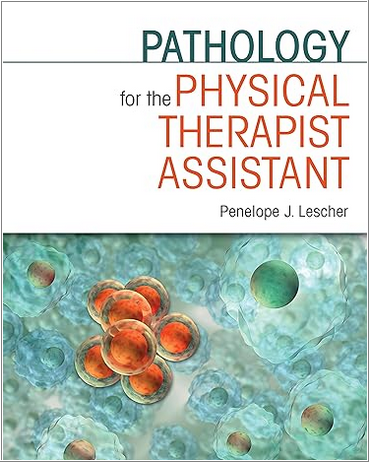
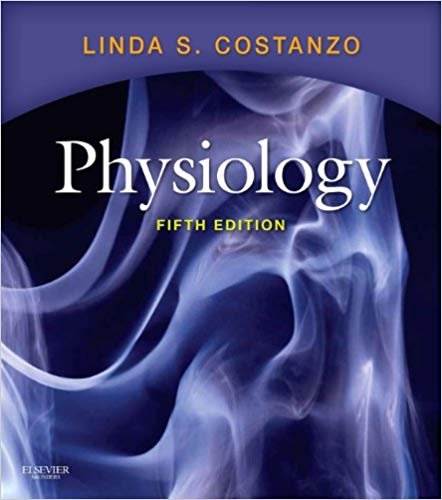
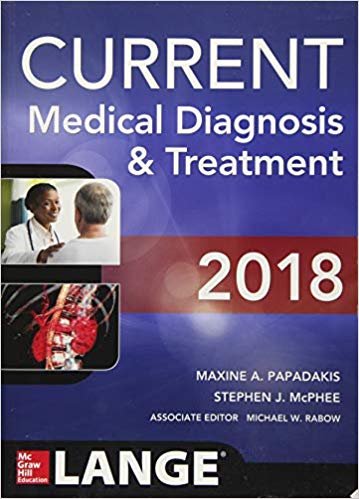
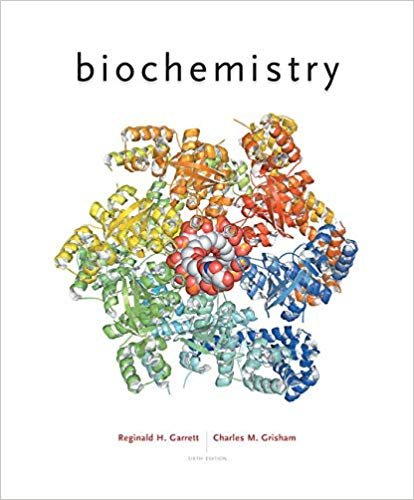
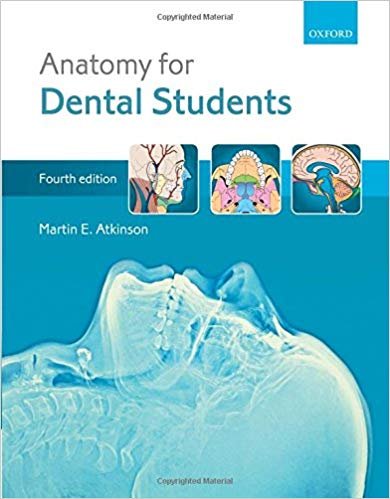



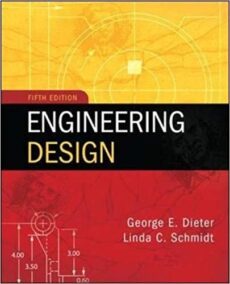


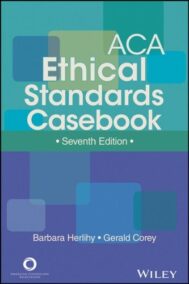
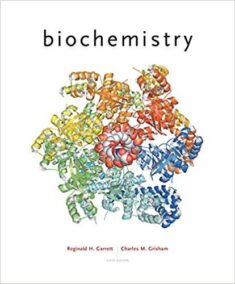





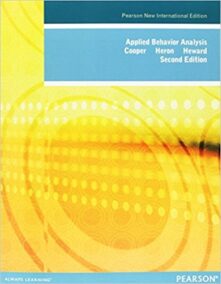

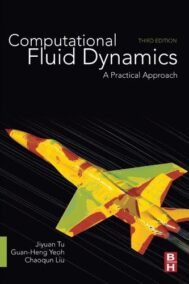
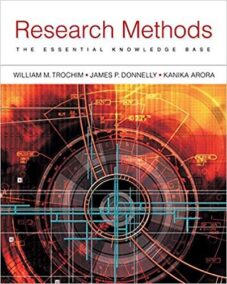





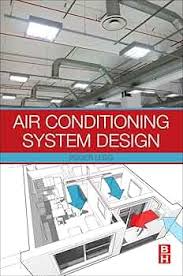



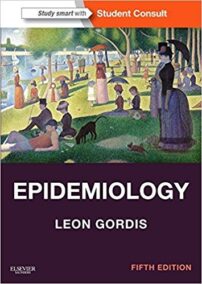



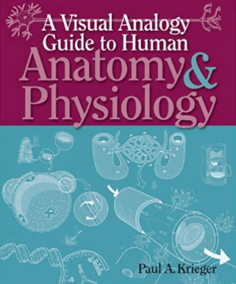


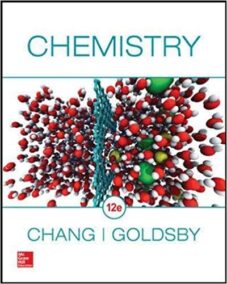
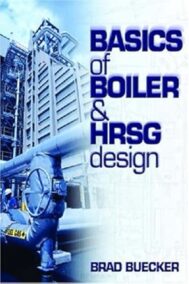








Reviews
There are no reviews yet.